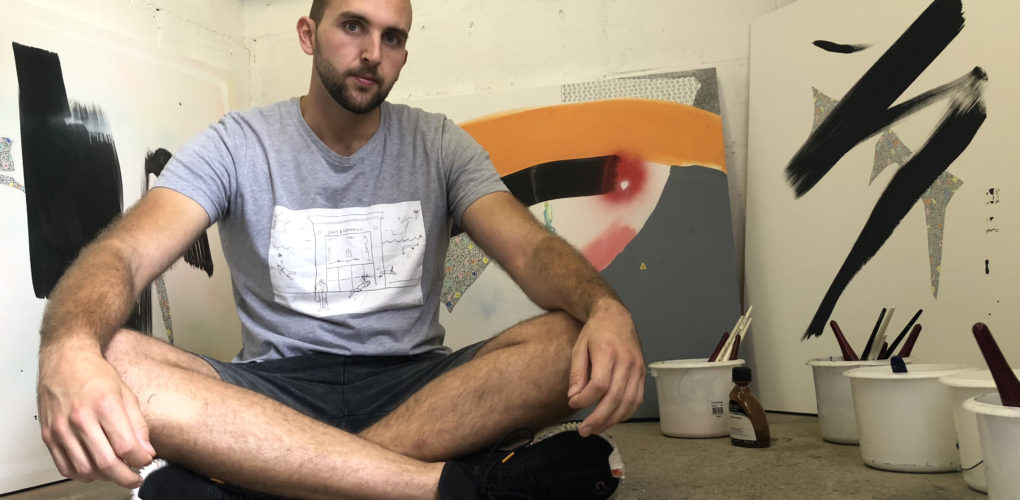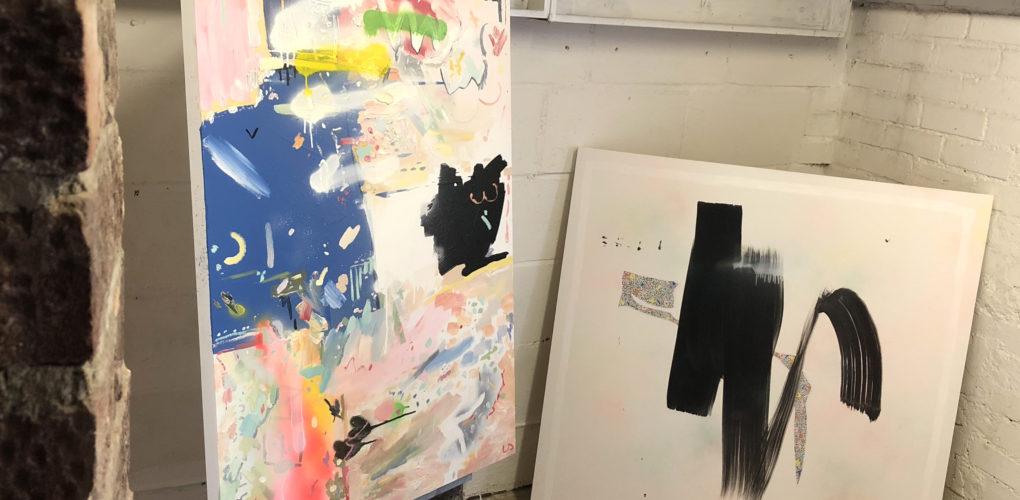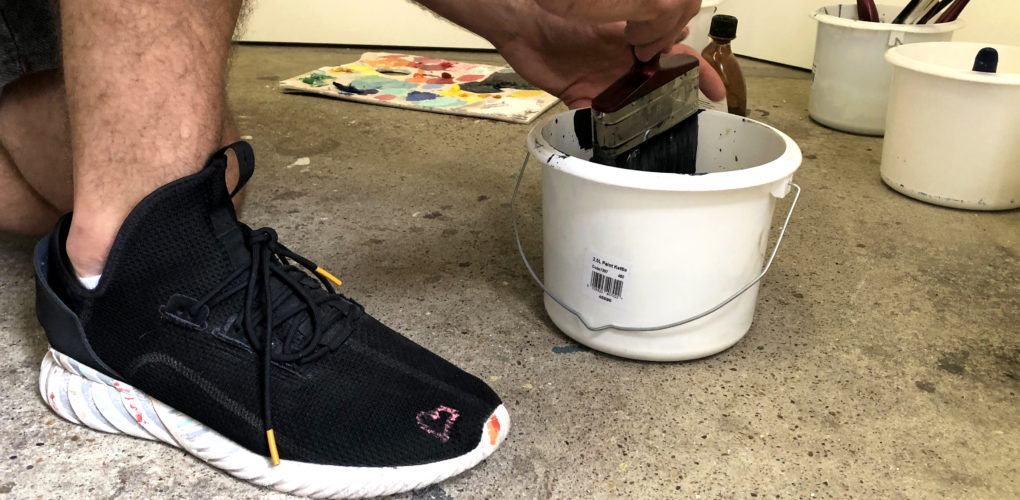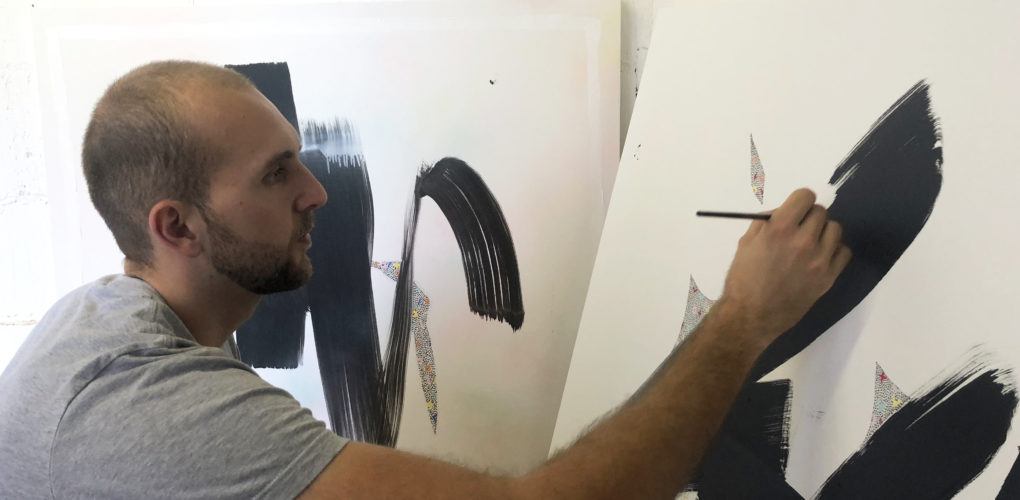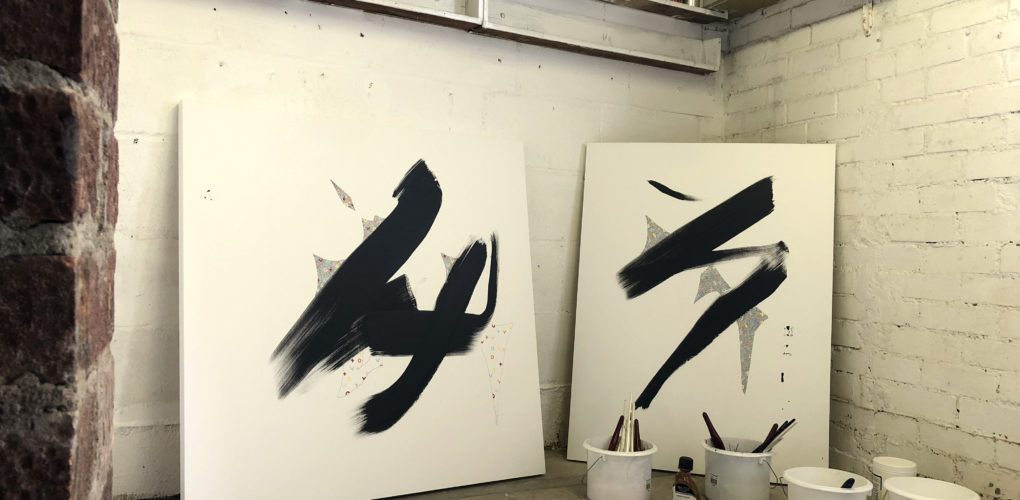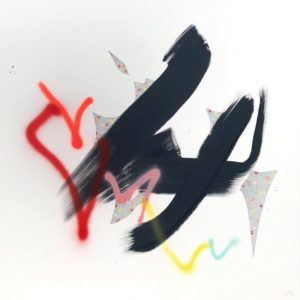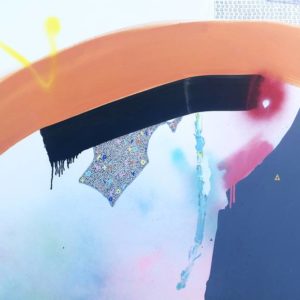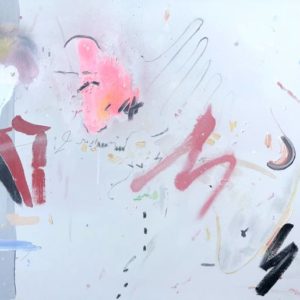One to Watch
 Lewis Durrant: Creating Harmony with Visual Contrasts
Lewis Durrant: Creating Harmony with Visual Contrasts
Lewis Durrant uses fluid forms and cutting lines to explore the visual elements necessary to form a harmonious composition. By engaging contrasting components he creates a complex interaction between composition and color on his canvas. Durrant’s artistic approach allows for the painting to take form through the experience itself, which transcends into the complex and imaginative nature of his work.
Based in London, Durrant received his BA in Fine Arts from Kingston University, also studying abroad in China. His paintings have been showcased in group exhibitions and fairs throughout the UK, Canada, and Los Angeles. He has also collaborated with Jigsaw Westbourne Grove store and Surbiton Racket & Fitness Club for solo exhibitions.
What are the major themes you pursue in your work?
The major themes I pursue in my work are freedom, creativity and love. I utilise an arsenal of different painting techniques to create an experience on canvas that engages the viewer’s mind. The engagement should involve the mind absorbing the freedom of the canvas experience, causing the mind to play with what it sees and simply enjoy it.
At the same time I also like to offset the balance of the painting with visual contrast. This contrast relates to the polarised nature of our world and of all things. Ultimately, I intend for these strongly contrasting visuals to work together in a blended harmony on the canvas.
How did you first get interested in your medium, and what draws you to it specifically?
After years of using acrylics at school, I decided to experiment with oil paint. I instantly fell in love with the medium. There is something about the nature of oil, it’s glistening shine, the richness of the pigment and the array of vivid colours you can create, that really tickle my creative imagination.
How has your style and practice changed over the years?
Through practicing with oil paints, I would for the first time, create completely abstract paintings! After exploring abstraction for a while I began to make larger work. The creation of ‘Tipping Point’ (2014) is arguably as it says, the ‘tipping point’ in my practice. The painting was completed with a bold yellow mark that zips across the canvas to pull the whole painting together. With this painting I realised that a final act must take place in the painting process for it to be complete.
Can you walk us through your process? Do you begin with a sketch, or do you just jump in? How long do you spend on one work? How do you know when it is finished?
More recently I have discovered that my stronger paintings are those that don’t have preconceived ideas of what I want it to look like. Instead, the painting develops itself. I no longer force any constructed idea, I just let the freedom, creativity and love flow.
Some works can be done in a couple of days, some a couple of weeks, some a couple of months! I used to try and push every work to be perfection and it sometimes lead to the destruction of the painting. Through this experience I am now getting better at realising when a work is finished I know when a work is complete because I feel it inspire me within.
If you couldn’t be an artist, what would you do?
I would be a singer. I’d create music inspired by some of my favourite artists, let’s say a mix between Red Hot Chili Peppers and Drake. I’d go out on stage and jump around. Yes, I love to dance.
If you could only have one piece of art in your life, what would it be?
It would of course be an original Lewis Durrant. I would get a large canvas, say fifteen foot wide. I would spend 24 hours painting it whilst listening to a playlist of my favourite music.
